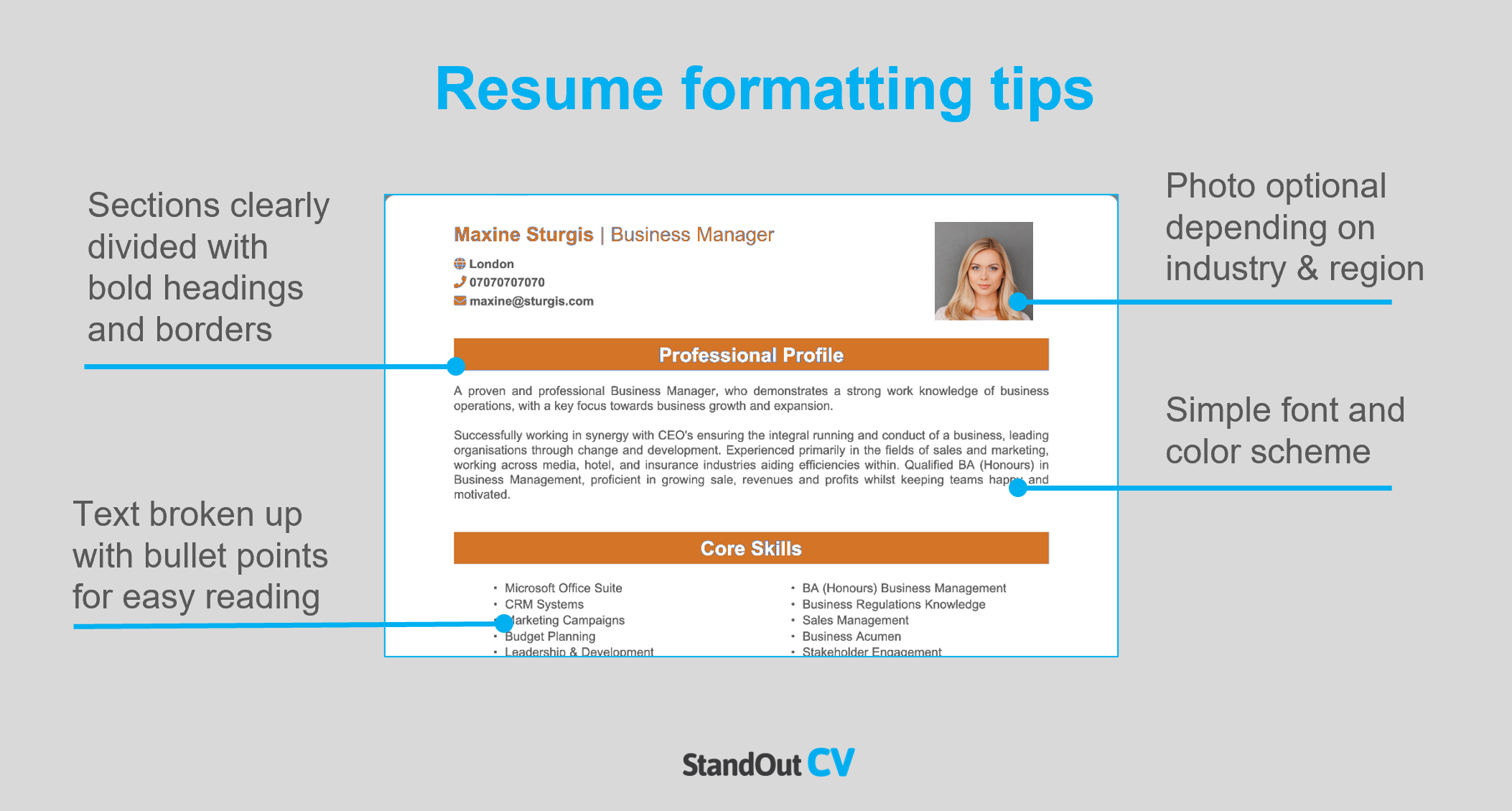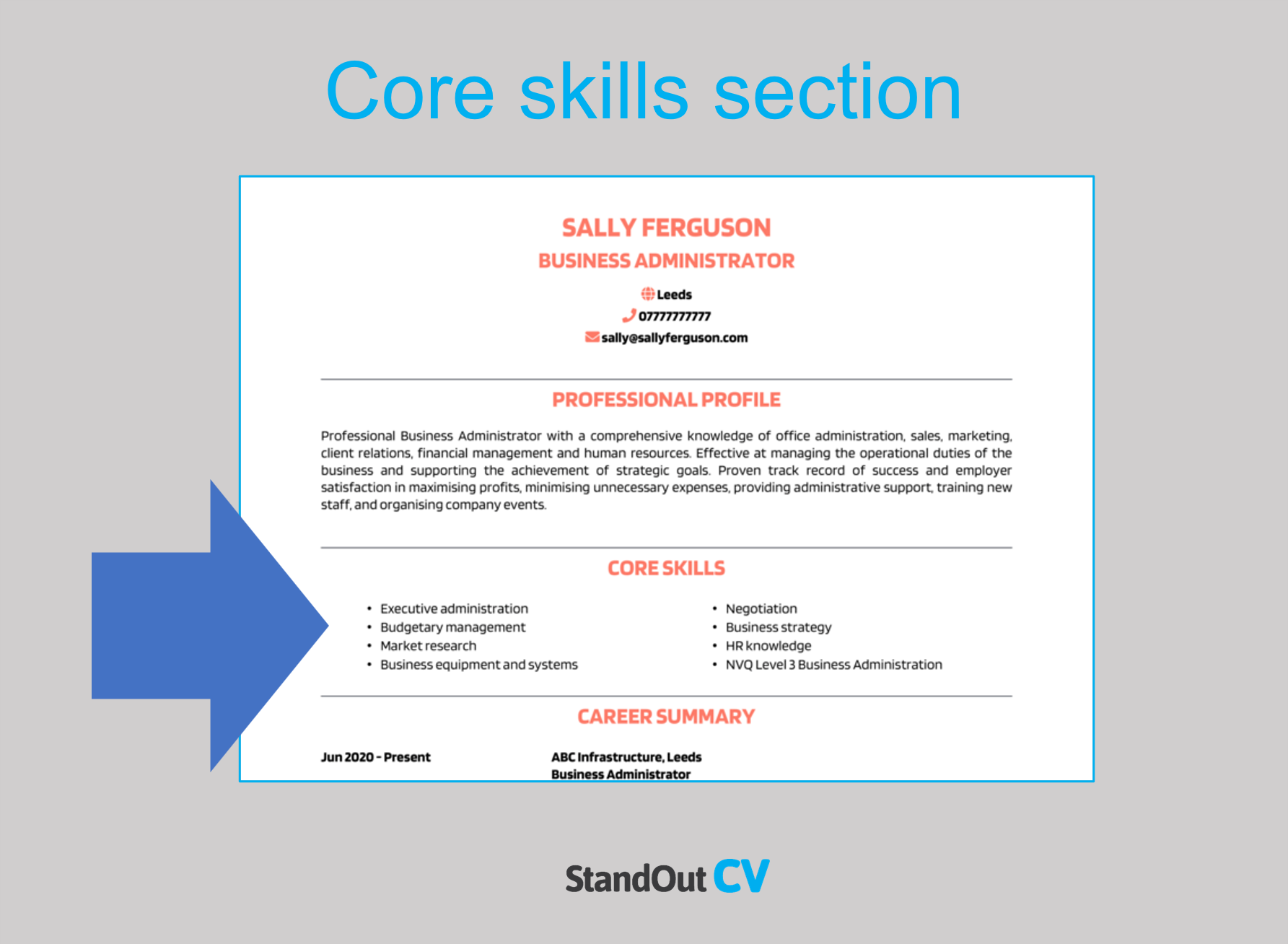You know that you’ve got a vocal range that would rival Freddie Mercury’s, but how are you supposed to show this on a sheet of paper?
The truth is, you can’t! But you can grab the recruiter’s attention with your experience and formal training.
To find out how to create a resume that hits all the high notes, check out our detailed guide below. And be sure to make use of our singer resume example for further inspiration.
Contents
|
Singer Resume Example
This example Singer resume gives you a general idea of how to structure your own resume, along with the type of content you need to include.
Sticking with this resume format will help you to get noticed by employers and ensure that they can quickly see the benefit of hiring you.
Now, lets walk through a step-by-step guide on how to write your own winning resume.

Singer resume layout and format
When it comes to holding the attention of recruiting managers, the format and layout of your resume play a key role.
Your resume needs to strike a perfect balance between looking awesome, and being easy for recruiters to read (which is not always easy to achieve)
Use the following formatting tips to get started.
Formatting your resume for success
- Length: To ensure that recruiters will read all of your resume, limit its length to 2 pages – as they someteimes read hundreds of resumes daily.
- Font & readability: The key to a good resume is readability. To make your resume easy to read, use a clear and uncomplicated font, and break up the text with bullet points and short paragraphs.
- Layout & Structure: While creating an attractive resume, it is crucial not to compromise functionality for design. To ensure both, use bold headings and borders to structure the page into clear sections.
- Photos: You don’t have to add a photo to your resume in the States, but some regions and industries like to see them.
Quick tip: Achieving a professional look for your resume can be difficult and time-consuming. If you want to create an attractive resume quickly, try our quick-and-easy Resume Builder and use one of their eye-catching resume templates.
Resume layout
Include the following sections when you write your resume.
- Name and contact details – Make it easy for employers to contact you, by putting these at the top.
- Resume summary – An intro paragraph sitting at the top of your resume, summarizing the reasons why you should be hired.
- Skills section – A short snappy list of your most important skills, that can be quickly digested
- Work experience – Reverse chronological list of your previous jobs – voluntary work and college placements can be included if you have no paid experience.
- Education – List your qualifications and professional training.
- Additional info – An optional section for things like hobbies and interests.
Here’s what to include in each part of your resume.
Contact Details
Make it easy for hiring managers to contact you by adding your contact details to the top of your resume.
Keep this section small to save space and include the following.
- Name and profession title
- Telephone number – Ideally your cell phone so you can answer quickly.
- Location – Add your general location such as LA or New York
- Email address – Use a professional looking one with no nicknames.
You can add a link to your LinkedIn profile if you have one – you do not need to include personal details like date of birth or marital status.
Singer Resume Summary
Start your resume with a bang by adding a powerful summary to the top, summarizing your most valuable skills and experience.
This short paragraph is your chance to show recruiters why you are a perfect fit for the job and encourage them to read more of your resume.
How to create a resume summary that will get you noticed:
- Keep it short: Your summary is intended to be a high-level introduction to hook readers’ attention, so keep it brief (4-7 lines) – save the details for later in your resume.
- Tailor to target jobs: Optimize your summary to match the requirements of your target jobs, by mirroring the key words from the job description as closely as possible.
- Avoid using cliches: Recruiters always see cringey cliches like “hardworking guru who works well in a team or individually” – they don’t mean much to anyone, so focus your summary on tangible skills and experience.
Example resume summary for Singer
What to include in your Singer resume summary?
- Summary of experience: Provide an overview of the type of work you have done in the past and the impact you have made at previous employers.
- Relevant skills: Include your skills which are hyper relevant to Singer jobs to instantly show your suitability.
- Qualifications: Mention any Singer qualifications that are important to your profession in the summary briefly, to show you are qualified to carry out the role.
Quick tip: Choose from hundreds of pre-written summaries across all industries, and add one to your resume with one-click in our quick-and-easy Resume Builder. All written by recruitment experts and easily tailored to suit your unique skillset and style.
Core skills section
Sitting just underneath your resume summary, your core skills section gives recruiters 4-10 of your most in-demand skills in just a glance.
As Singer jobs may get hundreds of applications, this is a great way to stand out and quickly grab hiring managers’ attention.
It should be made up of 2-3 columns of bullet points and highlight attributes that are hyper-relevant to the jobs you are aiming for.
Best skills for your Singer resume
Vocal Technique – Controlling the voice, including breath control, intonation, resonance, and range, in order to produce high-quality vocal performances.
Music Theory – Maintaining detailed knowledge of music theory, including key signatures, scales, chords, and harmony, to understand and interpret sheet music and to write original songs.
Ear Training – Recognizing and reproducing musical intervals, rhythms, and melodies by ear, to maintain a strong sense of pitch and musicianship.
Stage Presence – Engaging and entertaining an audience, including using body language, facial expressions, and stage movement to enhance a performance.
Improvisation – Improvising melodies, harmonies, and lyrics in real-time, to add variety and creativity to a performance.
Recording and Editing – Maintaining knowledge of recording and editing techniques, including using a digital audio workstation to produce high-quality recordings of vocal performances.
Marketing and Branding – Understanding how to market oneself as a performer, including developing a brand, creating a website or social media presence, and networking with industry professionals.
Performing Arts Business Acumen – Working within the performing arts business, including booking gigs, negotiating contracts, and managing finances and taxes.
Quick tip: Our quick-and-easy Resume Builder contains thousands of in-demand skills for every profession that can be added to your resume in seconds – saving you time and greatly improving your chances of landing job interviews and getting hired.

Work experience
So, you’ve grabbed the recruiters’ attention with your summary, now it’s time to show them what you’re really capable of in your work experience section.
List your previous jobs from current to oldest, showing off the impact you made at each organization.
If you have tons of experience, you should just list the most recent an relevant jobs – but if you have little or no experience, add it all and even consider putting in voluntary work.
Structuring your jobs
It’s easy to overwhelm readers when writing about a job you have been doing for years or even months.
Break the information up like this to keep it simple for recruiters to understand.
Job outline
Each role description should begin with a qucik summary of the job and company, along with how the job fits into the strucuture of the organization.
Key responsibilities
The bulk of the role description should be comprised of bullet points that explain all of your duties in the job.
Keep the sentences short and simple to make them easy for recruiters to digest.
Key achievements
Finish each role by highlighting some impressive achievements you made whilst in the role.
Anything that benefited the employer can be included from making financial savings, to winning new customers.
Quantify your achievements with facts and figures if you can, e.g. “reduced call wait time by 10%”
Example job for Singer resume
Outline
Completed four 6-month contracts as a Vocalist for leading US cruise liner company Starlight Cruises, arranging and performing music for guests across multiple genres, including Jazz, Pop, Folk, and Musical Theatre.
Key Responsibilities
- Perform 12 scheduled shows per week as per the entertainment schedule
- Learn and develop assigned set list material, incorporating personal repertoire
- Work closely with the instrumentalists to create and rehearse interesting arrangements
- Provide entertaining and interactive performances with audience members
Quick tip: Create impressive job descriptions easily in our quick-and-easy Resume Builder by adding pre-written job phrases for every industry and career stage.
Education section
Near the end of your resume add your education section
Experienced candidates should keep it brief and focus on professional qualifications – and junior candidates can include high school diplomas, college degrees etc.
Additional information
The additional info section is optional but can be useful if you have anything else to add that could benefit your application.
For example, you may have some hobbies and interests that are relevant to your job – or you might have awards or publications to shout about.

Writing your own Singer resume
A winning Singer resume should look great, read well, and sell your skillset to hiring managers.
If you follow the steps above, you should be able to bag yourself a top job in no time.
And don’t forget you can use our quick-and-easy Resume Builder if you want to save time and ensure your resume contains the very best content.
Good luck with your job search!








